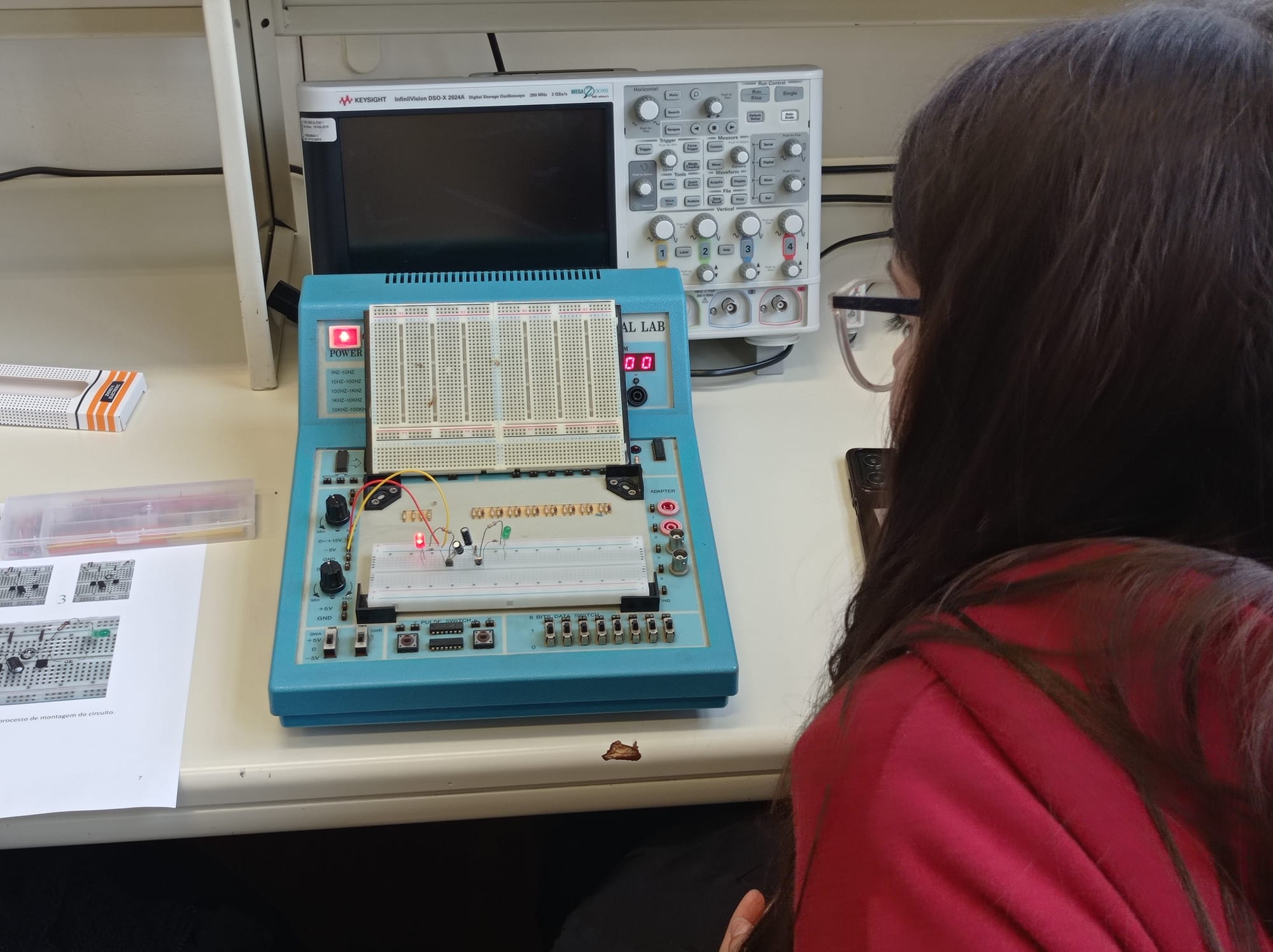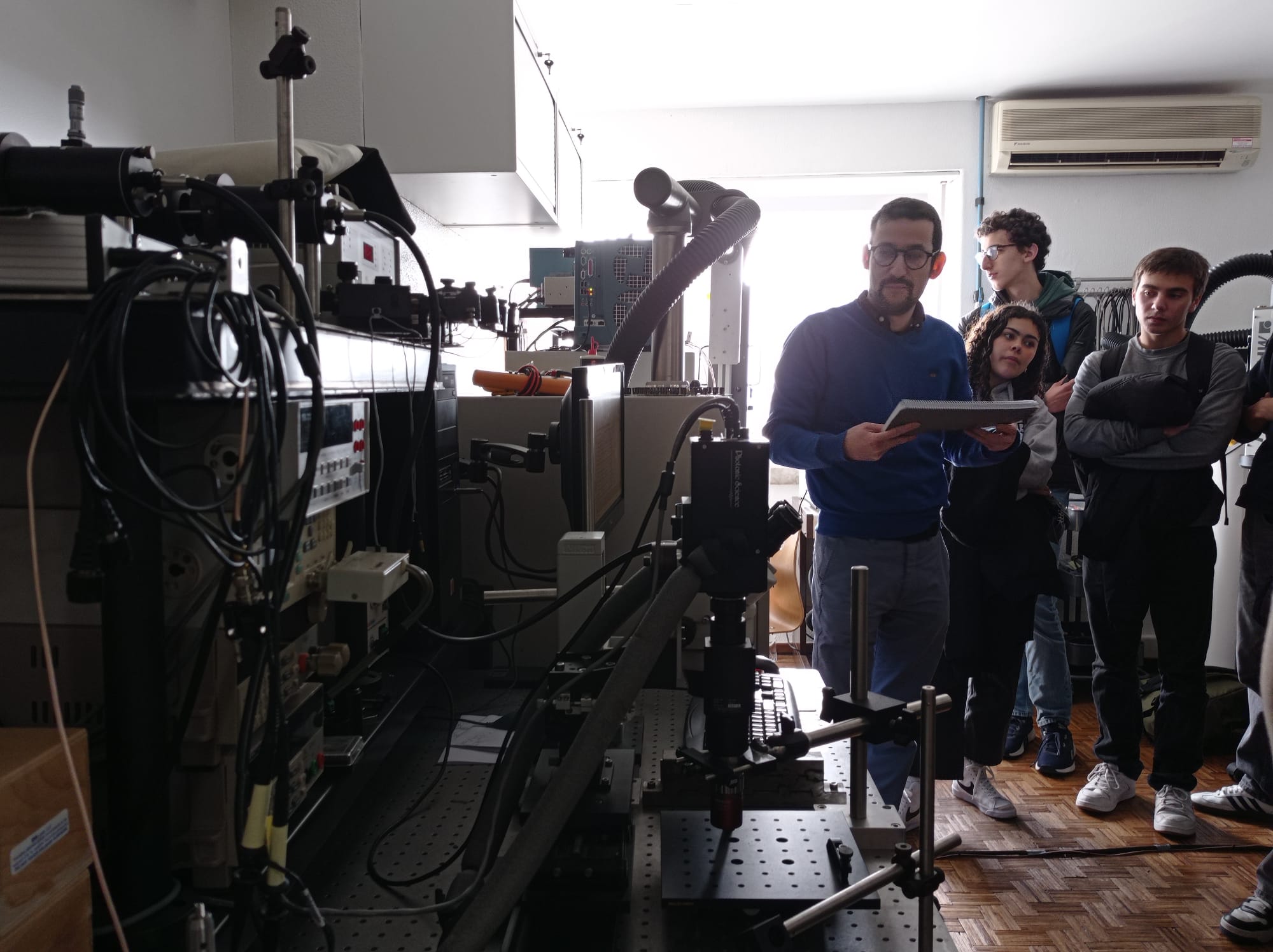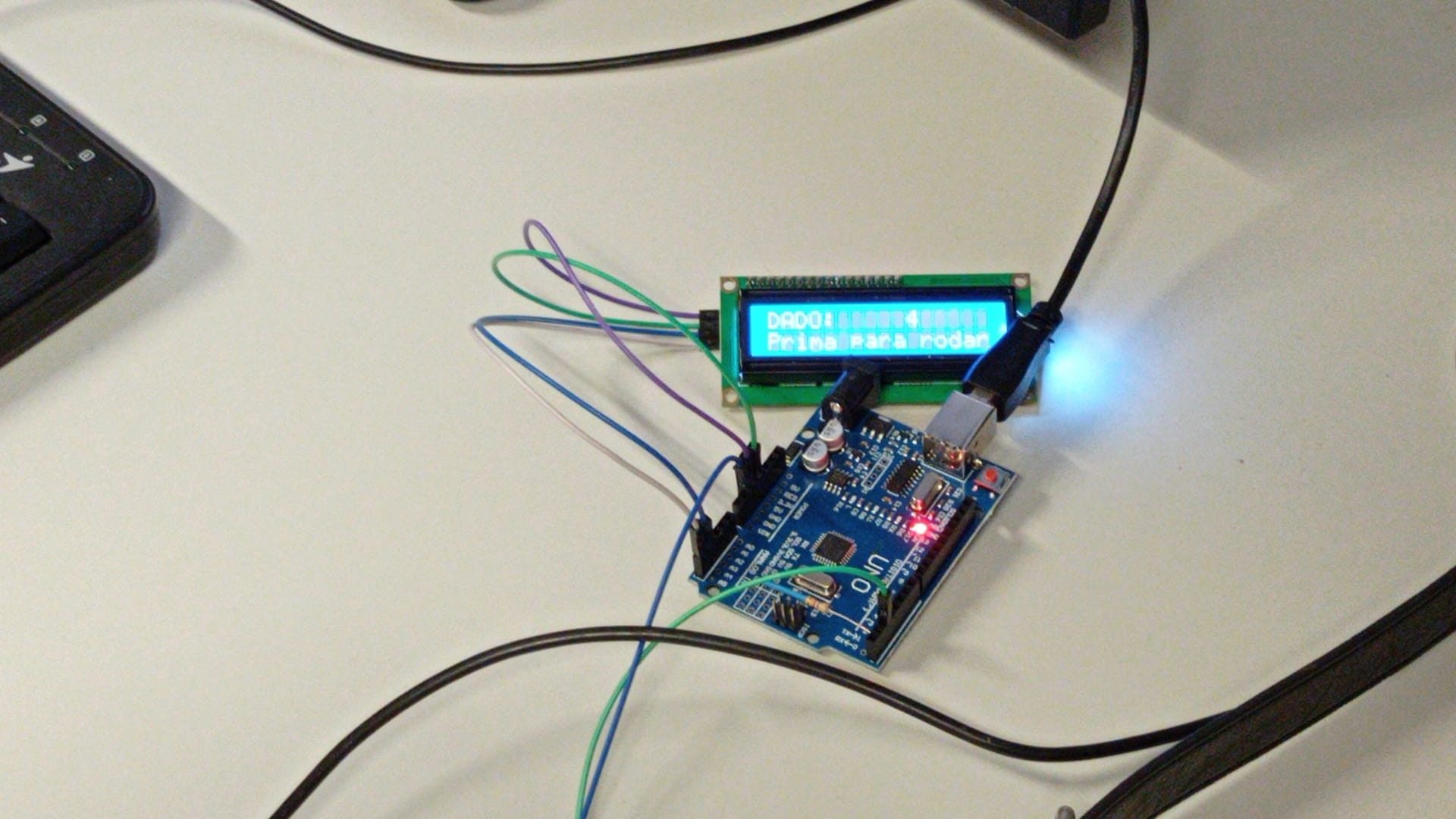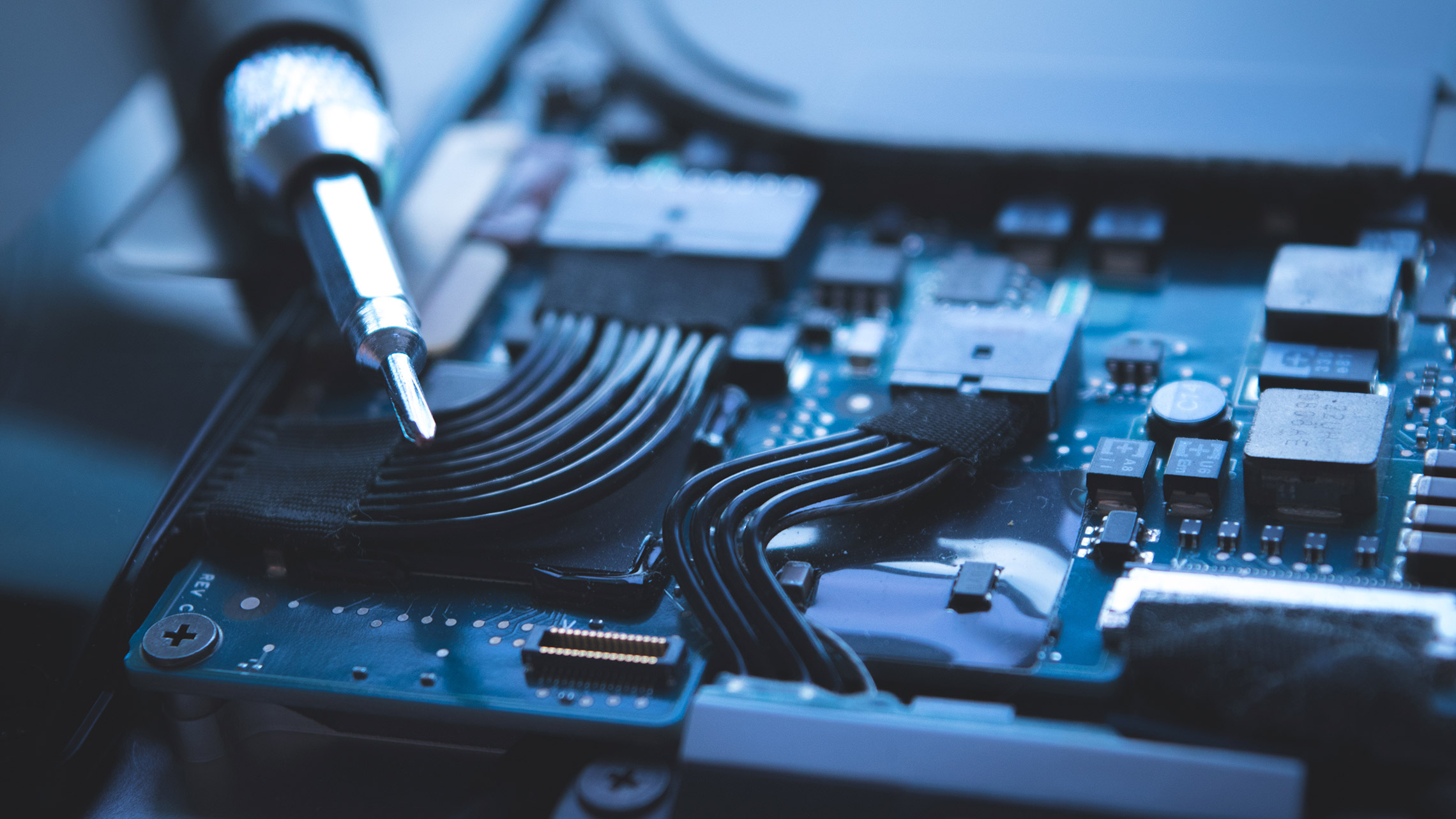Students from Gabriel Pereira Secondary School dedicate the day to electronics

On the 3rd of this month, students from the Gabriel Pereira Secondary School in Évora participated in various activities aimed at learning more about the course and the areas of intervention and research in Electronic Engineering. The initiative was organized by Professor Marcelino Bicho dos Santos from the Department of Electrical and Computer Engineering, within the framework of the European project GreenChips-EDU, which aims to encourage students to pursue studies and careers in this field.
The morning began in the electronics laboratories at the Alameda campus, where the first challenge was posed to the students: to assemble an electronic system that would allow two LED lights to alternate by connecting them to a breadboard. All the groups succeeded in achieving the desired results, with the help of the department’s faculty and master's students.

Next, the students visited the workshop of the student groups TLMoto and PSEM - Mobile Energy Sustainability Project, which showcased their latest advancements in the construction and improvement of prototypes – a motorcycle and an electric car, respectively. The group members introduced not only the structure and organization of their teams but also the importance of electronics in their projects, such as energy management and integration with control systems.
They also visited SiliconGate, a company dedicated to the creation and optimization of electronic circuits for energy management. As an example, they presented earbuds that are implemented with four integrated circuits, which respectively manage energy and battery charging, Bluetooth connection, digital processing, and audio functionality. The students also visited the laboratory where testing and characterization of the developed circuits are performed, allowing comparison of their performance with the initial specifications.

The morning ended at PETsys, a company dedicated to the development and production of gamma ray detectors for the next generation of medical PET scanners and LIDAR, among other applications. PET scanners are used to obtain metabolic images of the body, and they are used in various medical specialties.
The afternoon was entirely spent at the Taguspark campus and began with a second practical activity with the students: assembling a circuit and programming it with Arduino to obtain and control some of the functions of a given electronic die. This die displayed a random number on an LCD screen when a button was pressed.

Later, they met some members of N3E - The Electronic Engineering Student Group of Técnico. The students saw some of the materials developed by the group, including the prototypes used in the national robotics festival.
They also visited the control room of ISTSAT-1, where Professor Gonçalo Tavares talked a bit about the mission and operation of the satellite, which was launched into space in July of last year and is currently active in orbit.
The day ended with a group photo at Taguspark.
See the full photo gallery by clicking the green button here.
